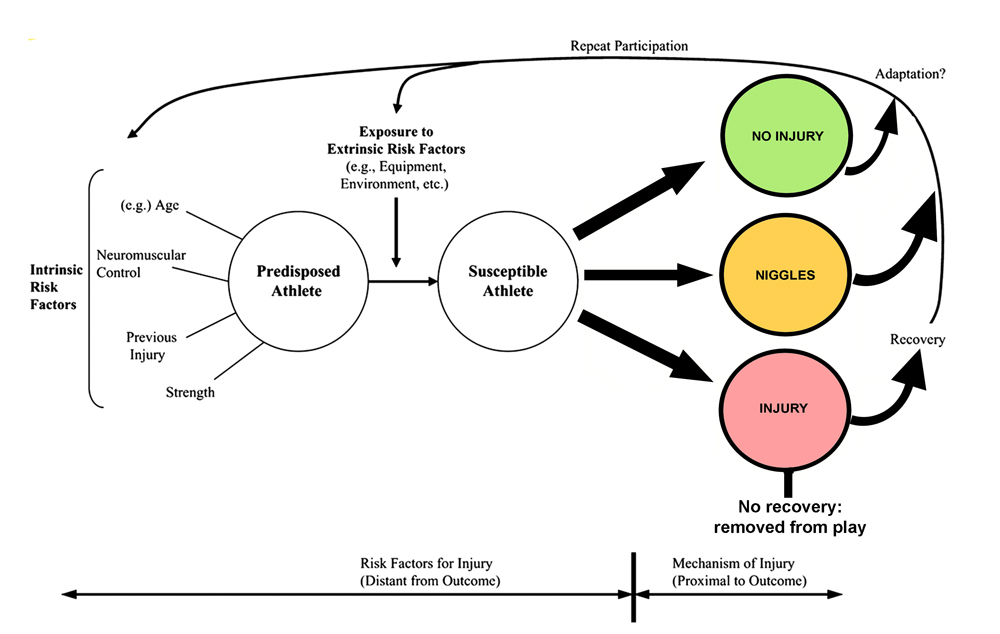Injury niggles: manage small problems for a big difference
This article explains why classifying athletes as injured or uninjured may be too simplistic and how addressing niggling injuries could improve outcomes in the longer term.
Niggles are an accepted consequence of sports participation. Even though athletes accumulate many aches and pains through their endeavors, most agree that the benefits of sport participation outweigh the discomfort. In professional sports, pain is even considered part of the game, and a hardship that players must endure to play at the highest level. Coaches and media often revere athletes for their ability to take physical punishment year in and year out.
Rather than romanticizing the ‘no pain, no gain’ narrative, sports professionals should be honest about what’s going on here. The aches and pains associated with sports participation are not niggles. Niggle is a cute word designed to diminish the importance of what the body is telling an athlete so that they will return the field. Make no mistake; niggles are injuries. When an athlete reports a niggle, it means they are experiencing discomfort, pain, or the inability to execute a previously honed skill. The discomfort or disability may not stop them from playing, but it does indicate that they are functioning at a sub-optimal level. There is a difference between being merely fit to play and in optimal health.

The dynamic recursive injury etiology model (adapted from Meeuwisse et al. (2007)
Full article: https://www.sportsinjurybulletin.com/injury-niggles-manage-small-problems-for-a-big-difference/